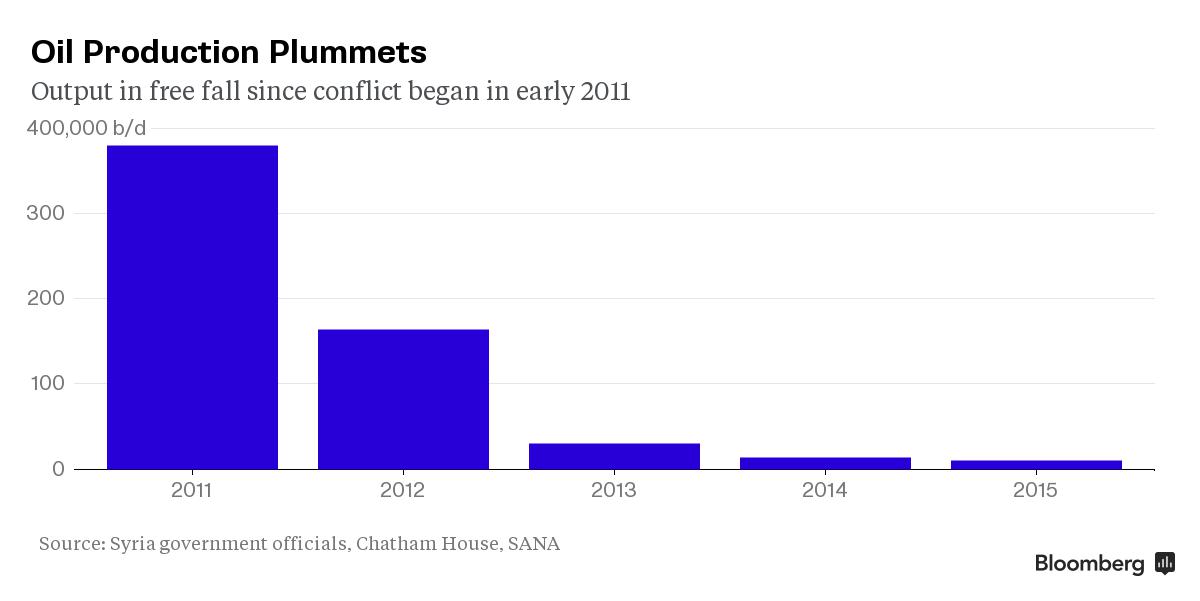By Khaled Amin
After nearly 5 years of relentless global inputs aiming to racially re-identify Syria…from an Alawi ruled into a Sunni one, heavily armed free-for-all battles between the Syrian army, free Syrian opposition army and ISIS, have ruined huge chunks of Syrian territories. The government now controls less than half its lands-along the western shores, while ISIS seizes most of the eastern borders with Iraq, and opposition having hands on cities in the heart of Syria. The question that has been widely put on table is, ‘How is Assad’s economy still functioning?’
The US coalition against ISIS in Syria has focused on hitting major oil fields under terrorists rule in Deir el-Zour-east Syria-in attempts to purge their finances, many critics on the other side viewed such attacks not only as economically dismantling ISIS, but rather mainly aimed to dry out key Syrian financial resources-just as it happened in its neighbouring Iraq, the country now is put under threat of humanitarian crisis due to scarcity of basic daily necessities like water, food and shelter
Despite enormous international pressure and economic sanctions raised against the Syrian government, Assad seems to be proceeding with countering the war that had risen to overthrow him, while instability tackles the country’s economy, as it swells poverty and unemployment rates.
Before the so called “Arab spring”, Syria held one of the best middle-eastern economies, it was one of the few self-sufficient nations in the region, but fortunes were not justly distributed among average citizens- like most of the pre-Arab spring regimes, there existed in Syria economic corruption and inequality-which fuelled protests and maximised its effects.
Now, after several years of devastating wars, the Syrian Center for Policy Research announced more than 330 per cent loss of Syrian GDP (gross domestic product), compared to 2010. Energy, agriculture and manufacturing sectors have been destroyed. Sami Nader, head of the Beirut-based Levant Institute for Strategic Affairs said: “Wealth and production infrastructure has been destroyed, It’s also threatening the economy and social fabrics of border countries, namely Lebanon and Jordan, which don’t have the resources to absorb the large number of refugees.”
Before the crisis, Syria used to produce around 380 thousand oil barrels per day (bpd), the number fell to less than 20 thousand bpd after European Union suspension of crude imports from Syria, with ISIS and other militant groups controlling major oil fields across the country.
Foreign aid from Russia, Iran and China is what’s keeping Assad standing, we must not forget how Russia and China used their Veto power against UN’s forecasted resolutions to launch air strikes against the Syrian army. It has been clear how those two great powers seek many welfares behind Assad ruling Syria, for Russia it’s a matter of national security-the fall of Assad means the rise of Sunni Islamists who present imminent threats to Russian southern soils- while China holds many economic interests in the region and Assad has been conveniently fulfilling them. The fall of Assad will also mean the western campaign’s victory over the eastern one, a battle that is way far from yet being decided…
Russia focuses mainly on providing military and intelligence support to the Assad regime, Russian troops maintained physical presence on Syrian soils to push back militant forces and enforce the Syrian army. In a report into the Syrian economy by the Regional Center for Strategic Studies (RGSS) in Cairo, the Economic Study Unit stated: “the allies of Syria attempted to strengthen its damaged economy, since January 2013 until mid 2015. Iran gave loans worth $5.6 billion to the Syrian regime, and in 2012 the two countries signed an economic cooperation agreement in the fields of energy, industry and agriculture. It appears that the loans Iran gave to Syria exceed the value of the previous loans. In this context, the U.N. special envoy to Syria, Stephan De Mestora, stated that Iran spends $6 billion annually in the form of military and economic aid to Syria, which the Syrian regime allocated to cover the countries needs of foreign currency and petrol products.” China also have huge energy investments in Syria and appears to be highly ambitious about its partnership with Assad.
More than 11 million refugees -in and out of Syria- spreading across the region, living under poor conditions and suffering dangers of dislocation. The Syrian disaster marks the worst in middle-eastern late history-the past 25 years, the economy is devastated and the international community’s blind eye to the humanitarian stipulation threatens the Syrian identity and existence.


